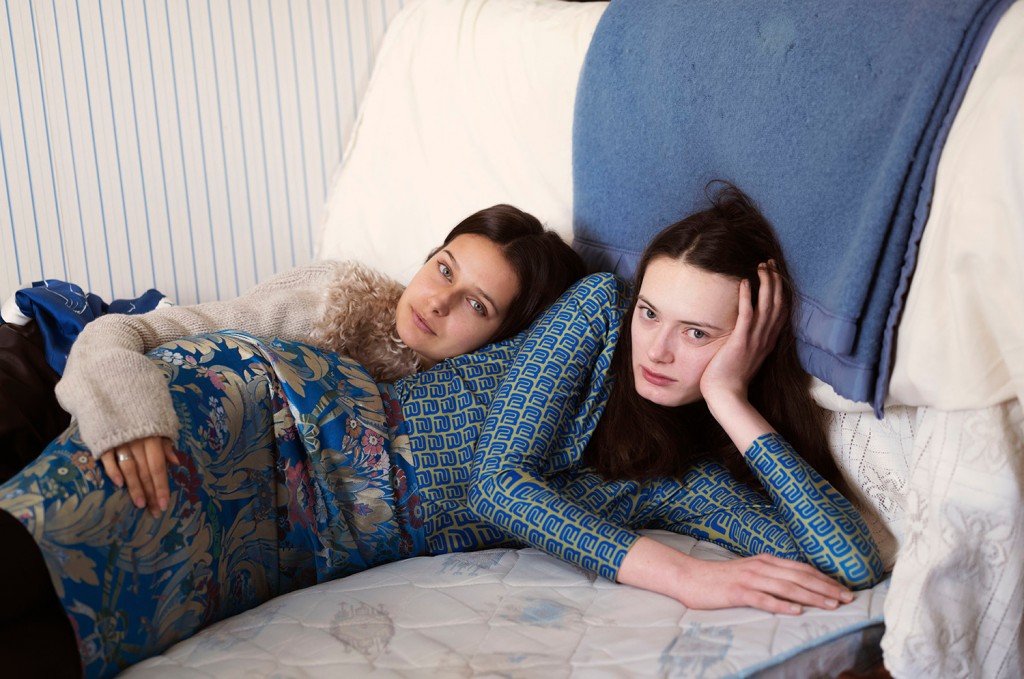
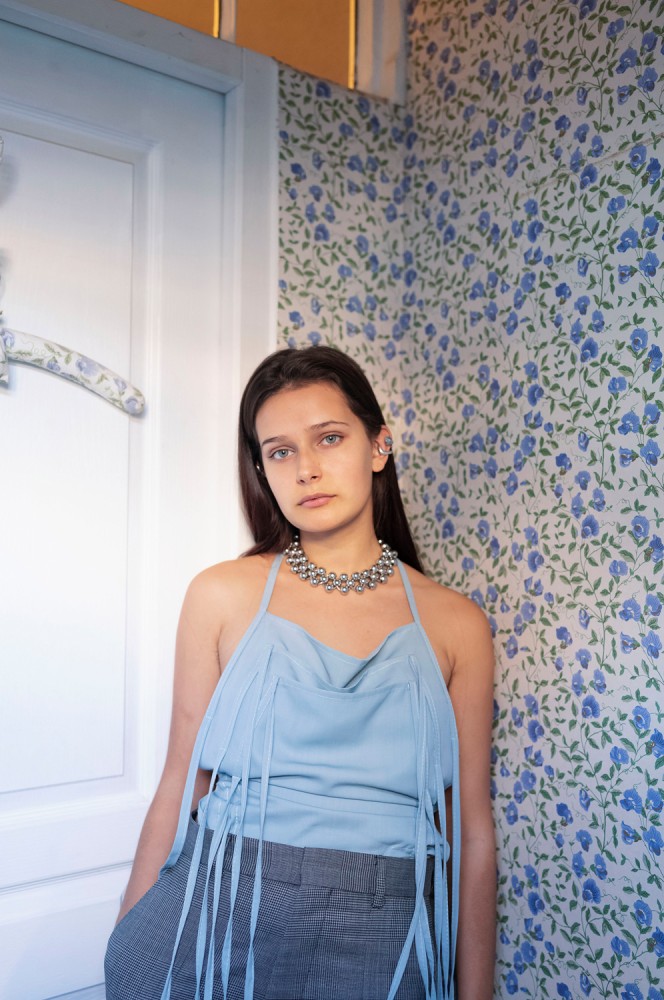
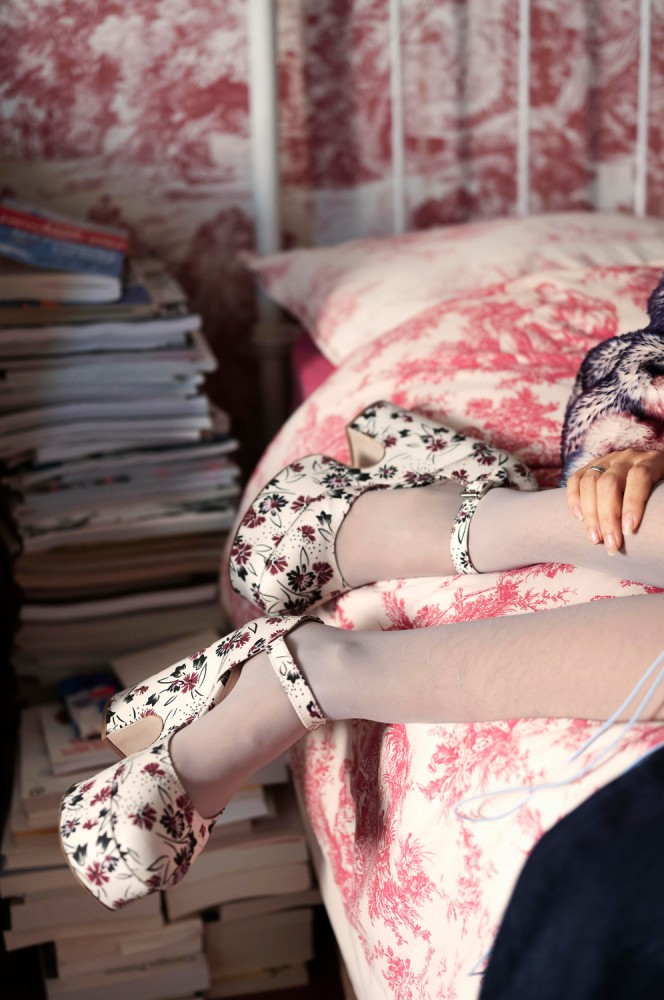
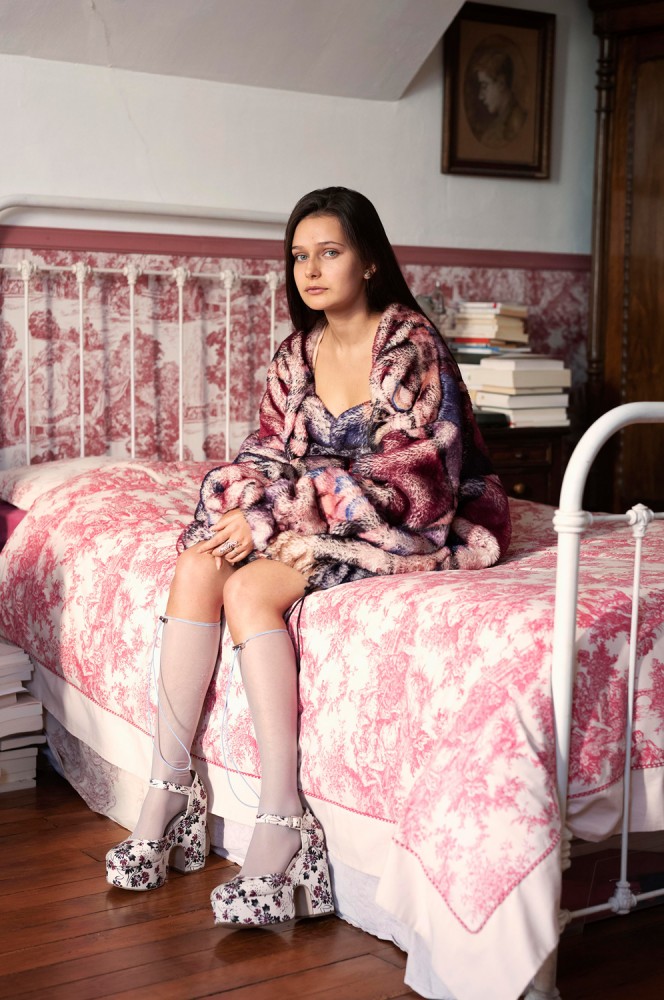
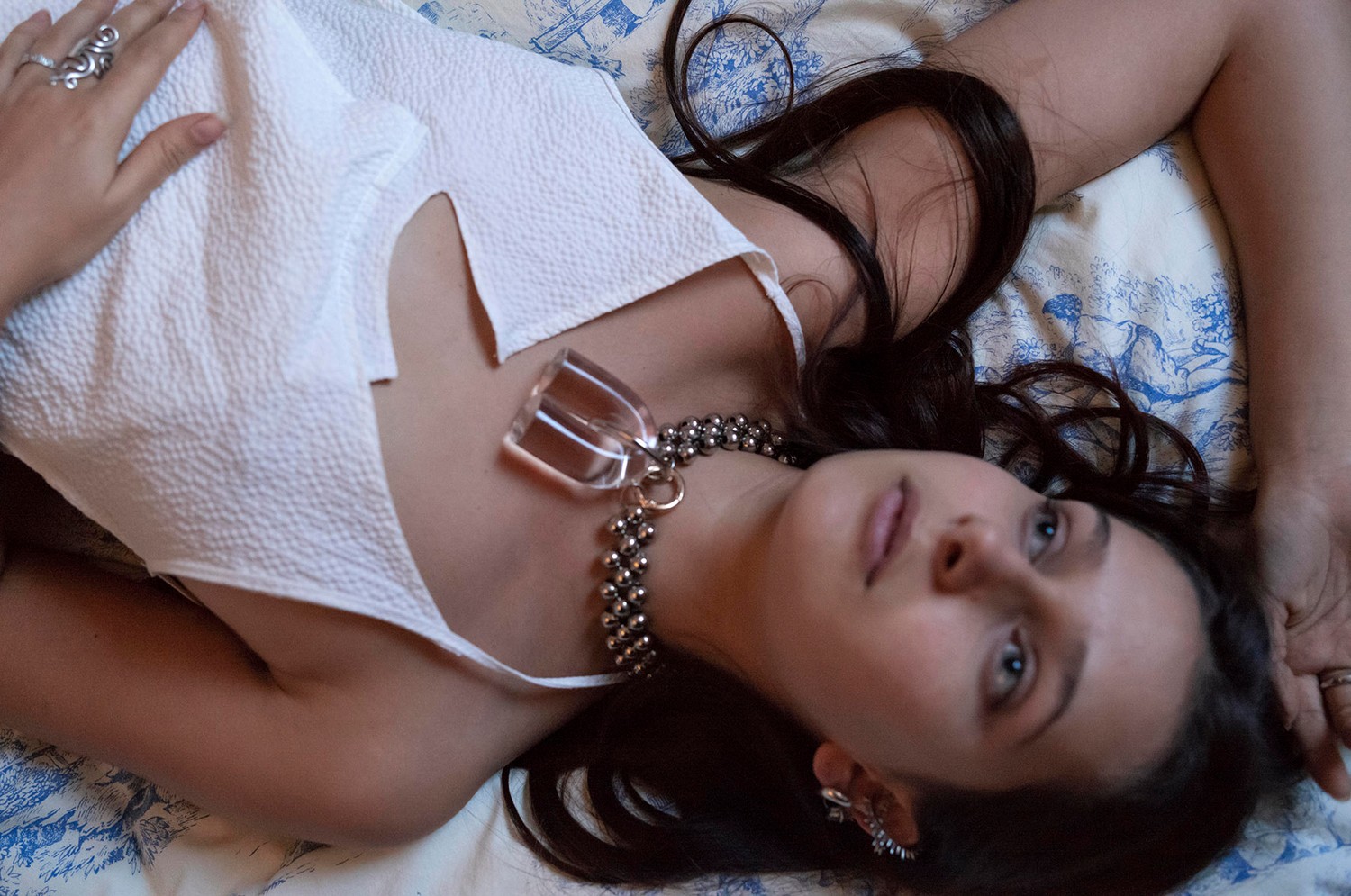
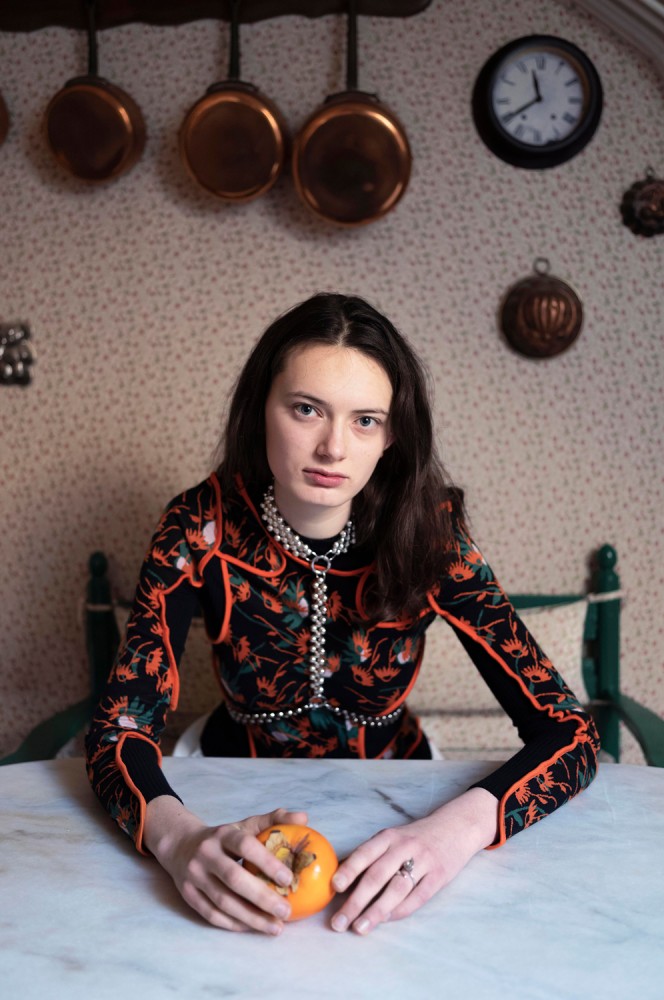
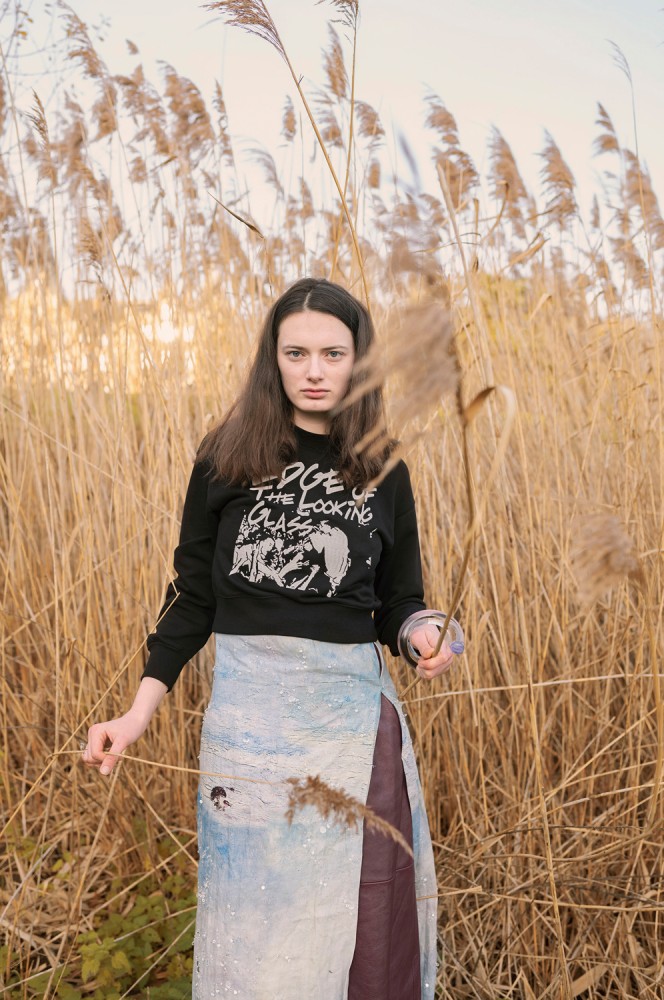
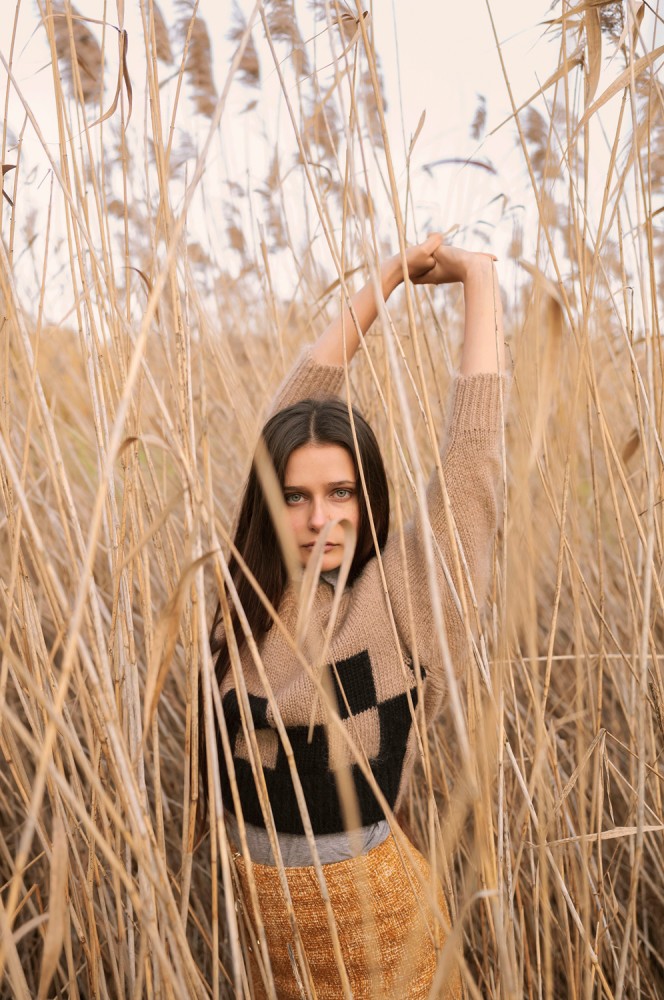
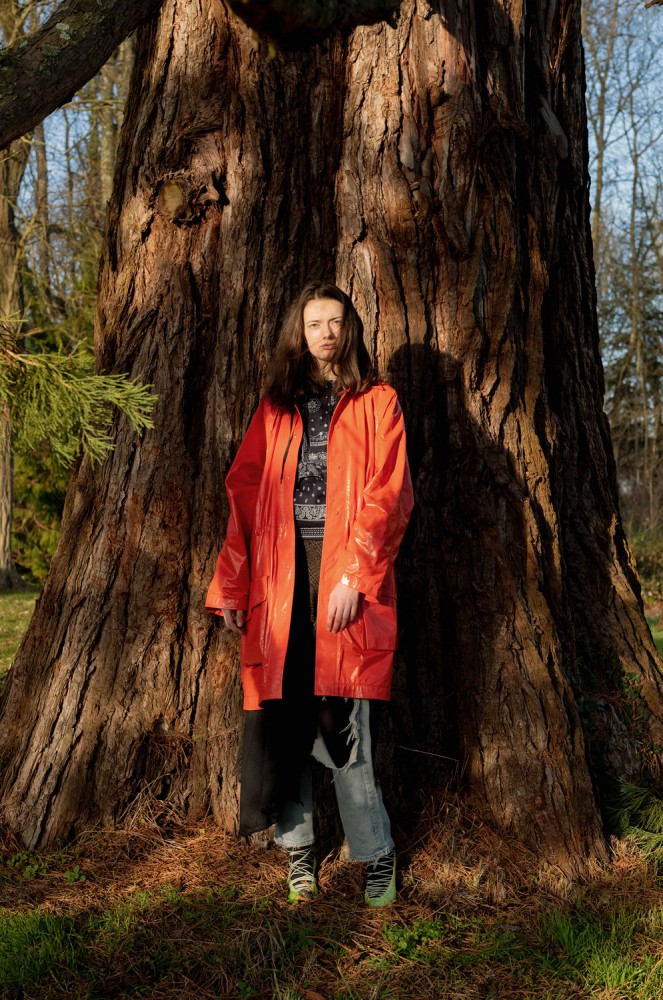
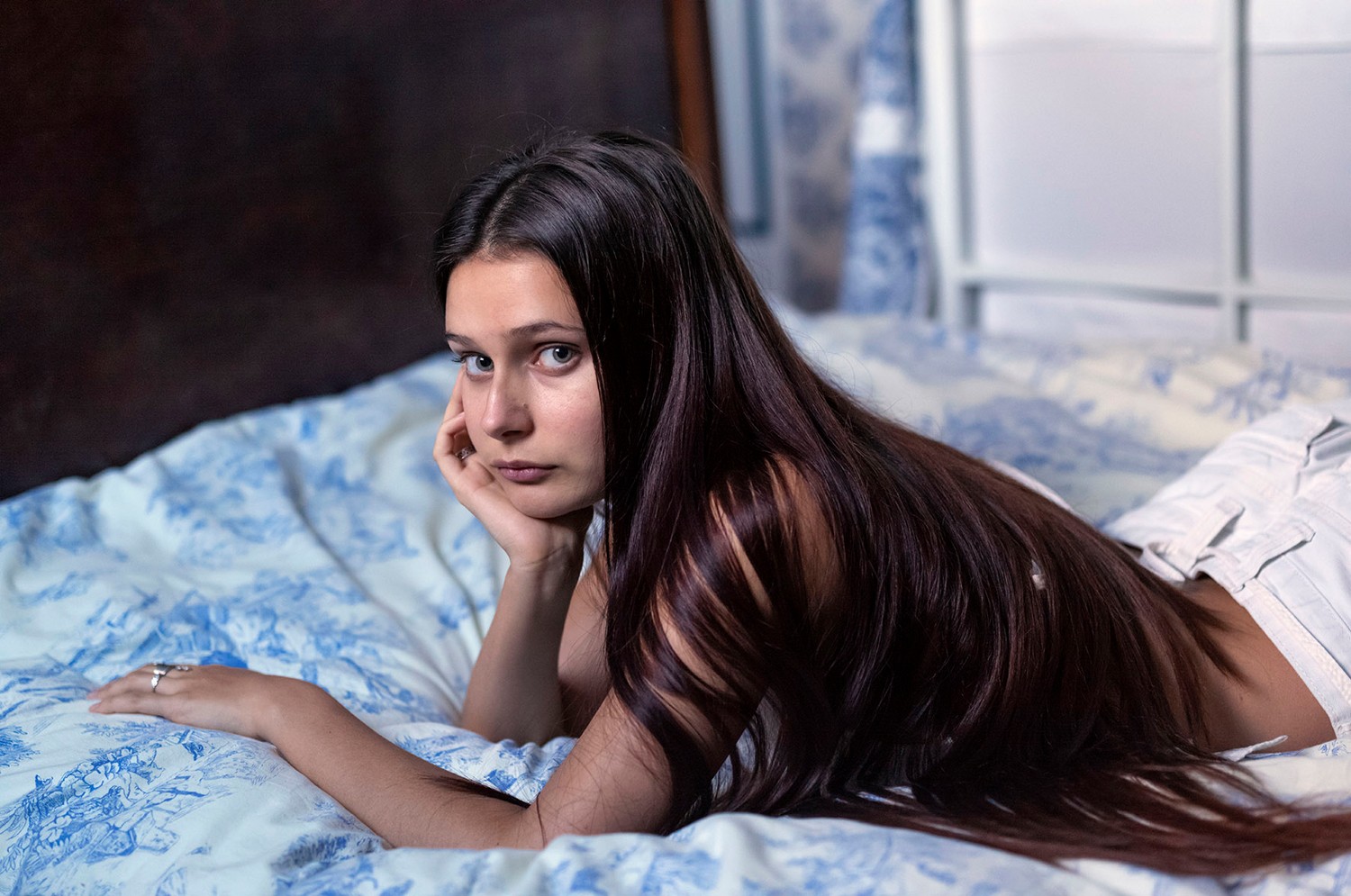










INTERVIEW
Elsa & Johanna
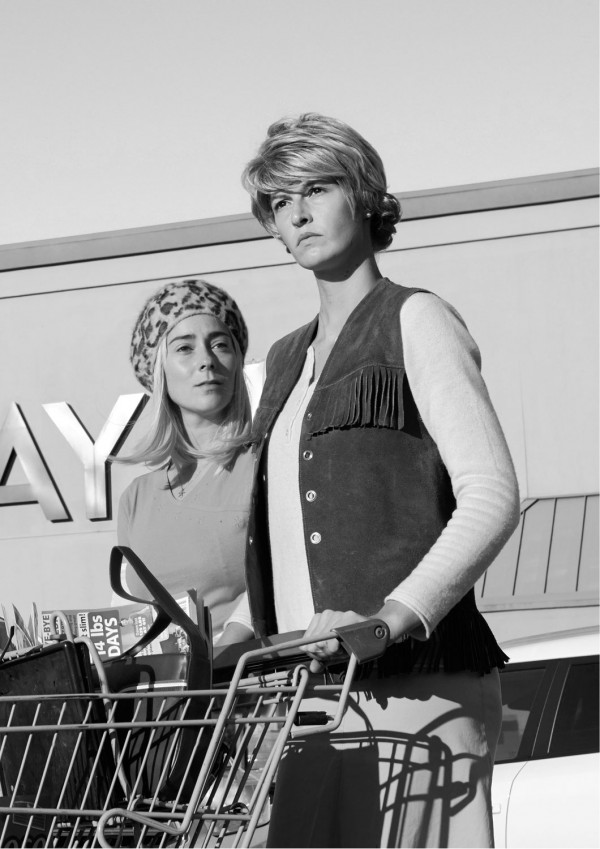
Photography Elsa & Johanna Style Damese Savidan Style assistant Jasmin Nahar Art direction Héloïse Schwab Models Séléna & Carla Special thanks to the Bijlenga-Kelmachter family Camera Leica S (Typ 007) with Elmarit-S 45 f/2.8 ASPH. (CS) and Summarit-S 70 f/2.5 ASPH. (CS)
In this series by photographer duo Elsa & Johanna, a private apartment within a Chateau in Fontainebleau becomes the backdrop for a romantic meeting between two characters – embodied by models Séléna and Carla. Their performative interpretation of gender roles plays with clichés and stereotypes, and finds unique ways to break them. “Our work is part of a family with a mother named Cindy Sherman”, the artists explain. Their images, however, are neither caricatures nor satire.
Here the French duo talk about the importance of the narrative behind their pictures, and what processes they follow to bring fantasy to life.
What does photography mean to you personally?
Elsa: Photography, to me, is a natural way to express and share my personal perception. It is an extension of my vision and artistic sensibilities. Through photography I can transmit an emotion, a sensation, pure beauty, or a story. What I appreciate most about this medium is the ability to reveal an imaginary universe to others, and compose a piece of fiction from the ground up.
Johanna: To me, photography is a means of expression that allows me to transcend my own reality, create new ones, and explore different fields of possibilities. It's as if you’re living a different movie every time. Photography is also a medium that allows me to combine many different creative genres, all of which I love: fashion, hairdressing, architecture, scenography, acting, psychology. It's extremely multi-faceted. It's also a social medium that brings together many people within a shared creative process, which leads to beautiful encounters and meaningful connections with other professionals.
Looking at your work, it seems as though each frame tells a story, prompting the viewer to contemplate what might have happened here. How do you go about conceiving your plots?
Elsa: When we conceptualise a mise en scène, we always start with the story’s main characters – who might be played by ourselves, models or friends. We imagine their personalities and relationships, even if they are entirely fictional. We then transpose these characters onto one, or several, sets. Our aim is to portray them in a realistic environment – the setting has to perfectly match the story. Sometimes we will give the characters names, to help us visualise these excerpts of their lives.
Johanna: Elsa and I love telling stories. Our artistic process is composed of a multitude of narratives. These stories are usually transmitted through our faces, as we seek to convey our characters’ desires, identities and fates. Our very first project was fundamental for our work as an artistic duo, because it allowed us to find our own language: the self-portrait, the mise en scène, the representation, the collective memory, the patterns. The universe we explore within a project is usually borne out of a physical place. We are like sponges that absorb a landscape, and when you squeeze them they release these impressions in cascades of colour.
What are your thoughts on self portraits, and what role do they play in your work?
Elsa & Johanna: However temporary it may be, when we put ourselves in our characters’ skin, we no longer pose – we become. Modern technology has amplified the culture of self-portraiture and self-presentation. Taking pictures of ourselves and showing ourselves to others has become the norm. Social networks, and the way we use them, have distilled our generation into images that everyone can create and distribute. As a result, our aesthetics reflect both the traditional culture of the portrait, as well as this new culture of visual self-expression.
To what extent has your approach been influenced by Cindy Sherman’s work?
Elsa & Johanna: Our work belongs to a family with a mother named Cindy Sherman. However, our pictures are not caricatures or satire, nor are they social criticism. Our principle of embodiment involves the exploration of a possible life for these characters. To achieve this, we do, of course, use certain artifices – but we ultimately move away from them until we are no longer aware of them. Our interpretations are performative, and are played out in immersive settings in which we confront our characters with the gaze of the observer. These interactions are essential to bringing the characters to life, and giving them the necessary space to express themselves.
What can you tell us about your examination of gender roles and clichés? Some of your images seem to have subtly ironic undertones.
Elsa & Johanna: The characters we inhabit are either fictional, or loosely based on our observation and interpretation of people we see out in the street. This means we are not limiting ourselves to our own gender. We embody girls, boys, homosexuals, heterosexuals as well as people whose gender is not so strictly defined. Androgyny is very interesting in the context of what we do, because the boundary is so tangible, and this tangibly is full of fragility and subtlety.
We are interested in all kinds of stereotypes that exist within the collective imagination. That’s why our protagonists might sometimes seem like somebody you recognise – be it from real life or a movie, or some elusive memory. In a rather magical way, the face you see in the photograph gives you a sensation of ‘deja-vu’, and that’s exactly what we try to achieve with our work: to re-activate the viewer’s memory and elicit these flashbacks.
You shot this series with the Leica S (Typ 007). What did you especially like about the camera and lenses?
Elsa & Johanna: Its precision is excellent, and the image grain is really nice and subtle. It also renders a beautiful blur.
How important is your choice of model for your work, and what qualities are you looking for?
Elsa & Johanna: For us, a good model is someone who can adapt to any type of situation, and contribute something different depending on the clothes and the ambiance of the set or the location. It is very important for a model to give something of themselves. When you don’t give anything to the photographer, nothing happens and the picture can become too static – without fragility, emotion or a sense of history. We love people who are able to convey something with their face, gestures and expressions, someone who isn’t shy in front of the camera and brings a little bit of craziness to the table. With all those elements in place, we are able to develop the narrative on the set – and that’s the way we like to approach fashion photography.